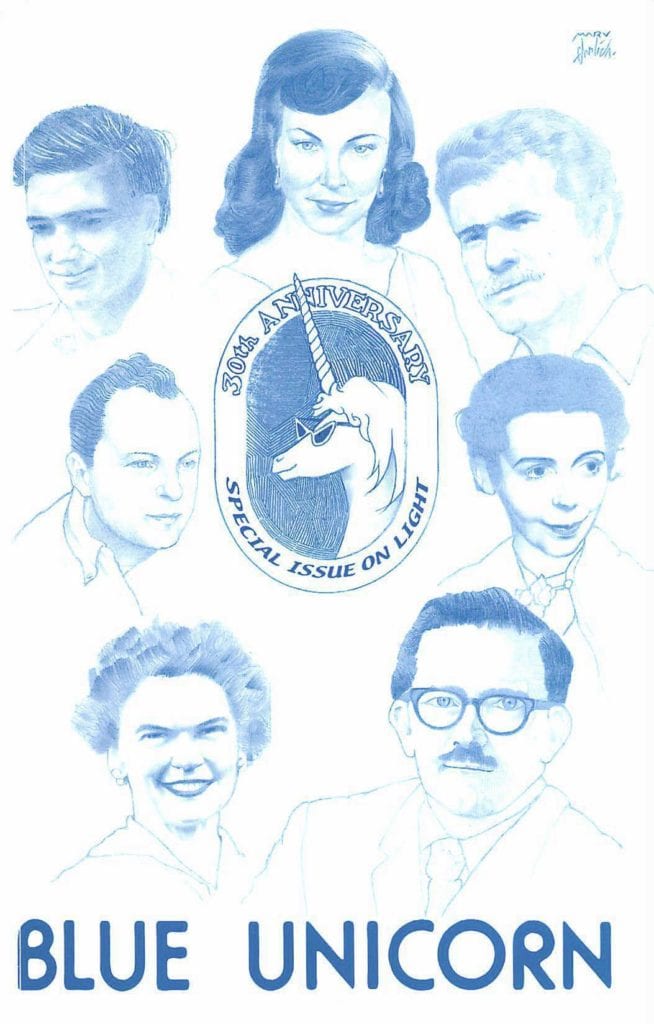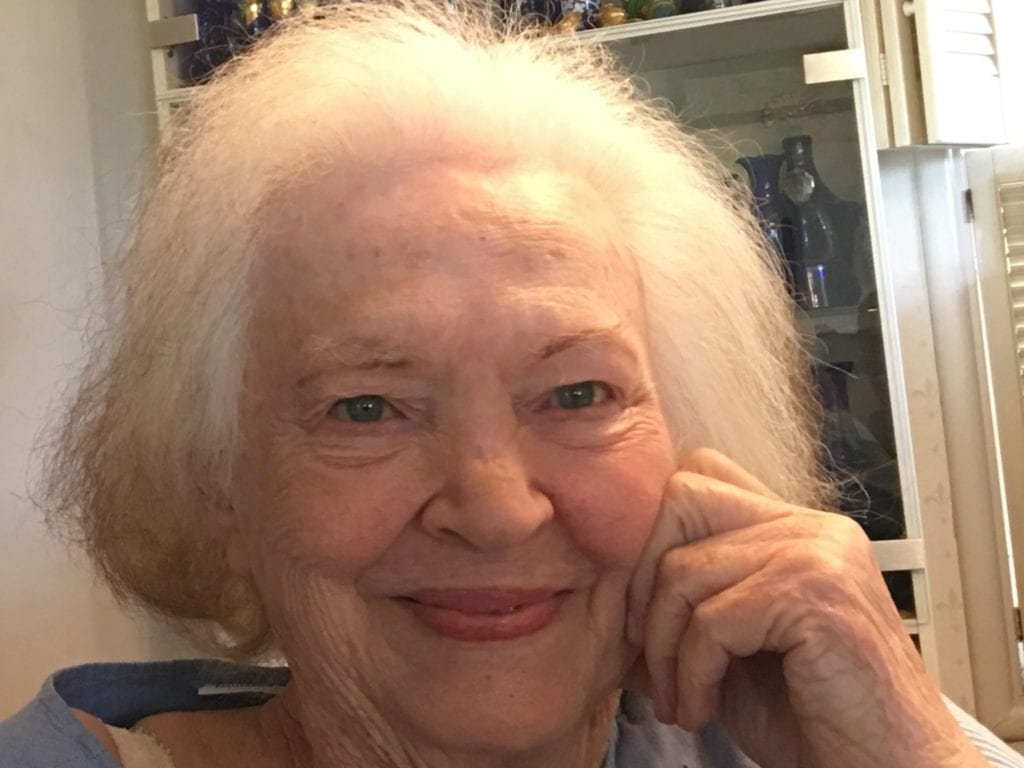In the spring of 1977, three poets, Ruth G. Iodice, Harold Witt, and B. J. Kinnick, sat down in a hillside garden near the U.C. Berkeley campus to plot the launch of new all-poetry magazine. Would it be called The Something Quarterly, The Fill-in-the-Blank Review? Iodice’s Berkeley mentor, the eminent Josephine Miles, favored some such weighty title. But the trio settled on The Unicorn and then, finding the simple form in use, added a color (Ruth’s favorite) and dropped an article. Blue Unicorn began.
The new magazine would distinguish itself by welcoming formal verse, alongside free verse, at a time when rhyme and meter were distinctly out of fashion. When Volume 1 Number 1 appeared that October, with contributions by the likes of May Sarton and William Stafford, the movement soon to be called New Formalism was just a subterranean grumbling.
BU also would make room in its pages to another “outgroup”: the so-called Activists, poets who had studied with the rigorous teacher-critic Lawrence Hart and pursued various characteristically Modernist techniques in a post-Modernist era. Activist Fred Ostrander first appeared in and then became a co-editor of the magazine; John Hart would follow the same path.
Thus two ideals of poetic craft meet in this magazine: one putting weight on the formal container, one emphasizing the intensity of the individual line.
Regardless of name and orientation, the prospects for the new magazine were not good. Little literary magazines appear and disappear with bewildering speed. They start with élan, make it to volume 2, or 3, or 4, dwindle in size and frequency, go dark. The long-haulers are typically based at colleges. BU is remarkable in having survived purely on subscriptions and on generous individual donations.

But what really kept BU going was the dedication of Ruth Iodice. Other editors came, worked, and went. Ruth was tirelessly there. John Hart summed up the panorama in a bit of doggerel published in volume 40, no. 2, February 2017, the spring before the last founding editor’s death:

GHAZAL ON FORTY
It’s not every day a Unicorn turns forty.
This Blue one, then, should pause to note it’s forty.
For decades now–four decades, patently–
The editors have met on Avon Road for tea.
For tea, and arguments, and split decisions
all aimed at making proud our pages forty.
(Because the cost of postage is a worry
The count of pages can’t grow much past forty.)
The kinds of poetry we’ve liked are many.
We like them all, but formal is a forte.
The count of poems varies too, but typically
an issue gives the reader at least forty.
How many poems is that, cumulatively?
We estimate it at five thousand forty.
That’s more or less. To count them would be silly
but surely the result would end in forty.
The lifespan of the Unicorn is long.
This Blue one, too, is still a colt at forty.
So long a race has been a relay, surely.
It takes a lot of legs to get to forty.
One thing is constant: since the seventies
Ruth Iodice has had us in for tea:
Harold Witt, B. Jo Kinnick, Danny Langton,
(and all of us on the far side of forty),
Martha Bosworth, Fred Ostrander missed dearly,
and Hart, yours truly, talking about Forty.
As Blue Unicorn closes on fifty years, it has seen changes. Since the deaths of Iodice and Ostrander, John Hart has continued as sole editor, and we have changed format and schedule. After decades as a stapled booklet, the magazine is now perfect-bound, the format preferred by bookstores and libraries, with key information on the spine. The schedule has changed from three issues per year to two more robust ones, containing more poems, on an annual basis, than before. Digital subscriptions are now offered at half price, and back issues are available for download (free to subscribers) as well as by hard-copy purchase.